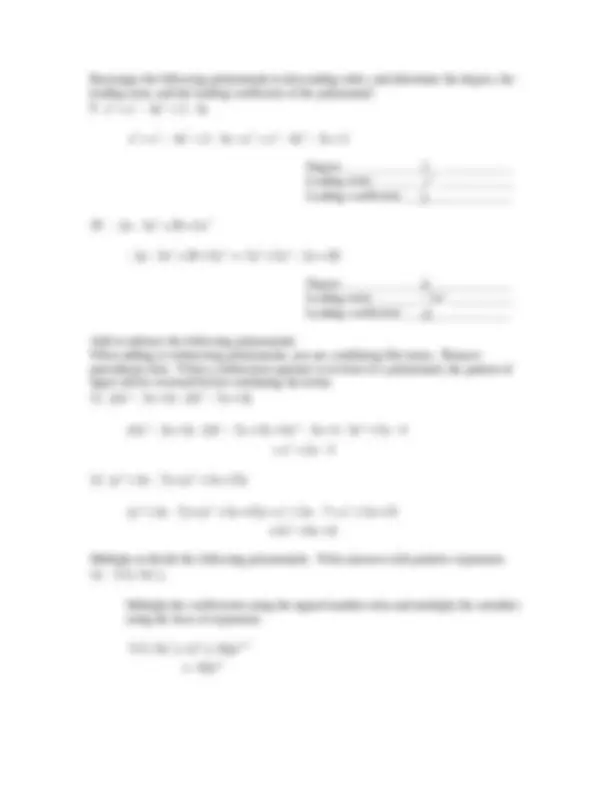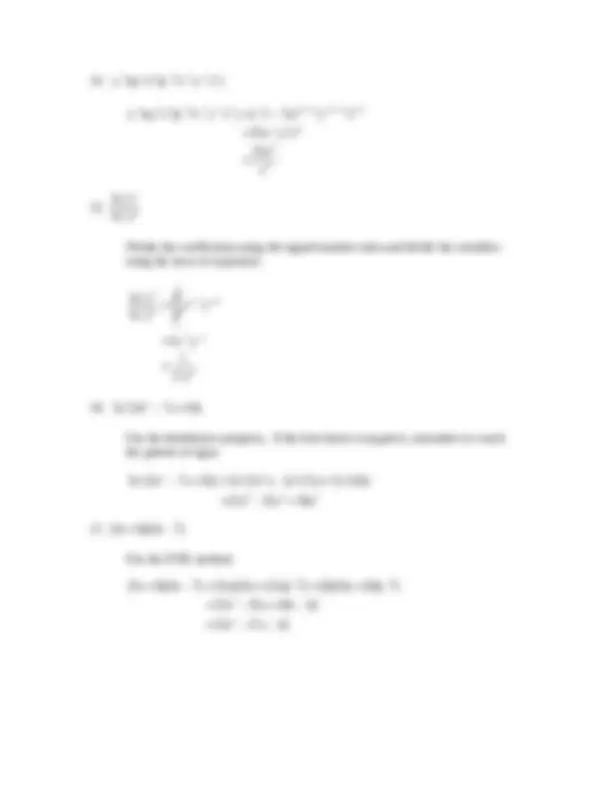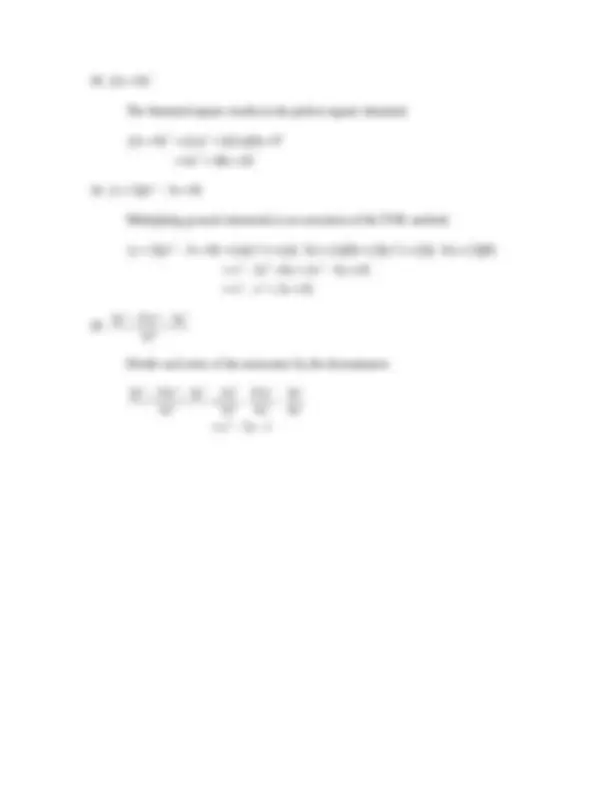





Study with the several resources on Docsity

Earn points by helping other students or get them with a premium plan


Prepare for your exams
Study with the several resources on Docsity

Earn points to download
Earn points by helping other students or get them with a premium plan
Community
Ask the community for help and clear up your study doubts
Discover the best universities in your country according to Docsity users
Free resources
Download our free guides on studying techniques, anxiety management strategies, and thesis advice from Docsity tutors
Review questions for simplifying and rearranging mathematical expressions and polynomials according to the rules of exponents and algebra. It covers topics such as simplifying expressions with negative exponents, using the product and quotient rules, and evaluating polynomials.
Typology: Study notes
1 / 5

This page cannot be seen from the preview
Don't miss anything!




Name___________________
Simplify. Write answers with positive exponents:
3
x x
Use the product rule:
3 3 1
2
2
(By definition, a negative power is the reciprocal
of a positive power. To change negative powers
to positive, mo
x x x
x
x
ve the negative power to the other
side of the fraction bar)
12 0 19
y y y
12 0 19 12 0 19 0
31
y y y y (The y is actually 1; a factor that is equal to 1 can be dropped)
y
8
2
x
x
Use the quotient rule:
8
8 2
2
6
x
x
x
x
7
7
m
m
7
7 7
7
0
m
m
m
m
9 3
( x )
Use the power-of-a-power rule:
9 3 9(3)
27
( x ) x
x
2 3
(3 xy )
Use the power-of-a-product rule:
2 3 3 3 2 3
3 6 3 2 3
27 (Evaluate 3 27. Use power-of-a-power rule for ( ) )
xy x y
x y y
3 2
a
b
Use the power-of-a-quotient rule:
3 2 2 3
3
6
3
a ( a )
b b
a
b
5 3 2
( 3 x y )
Note that with powers of a negative base, the exponent determines whether the
result is positive or negative. An even power will be positive, an odd power
will be negative.
5 3 2 2 5 2 3 2
10 6
10
6
x y x y
x y
x
y
2 4 3 2 7
( 5 )( 7 )
xy z x y z
2 4 3 2 7 1 ( 3) 2 ( 2) 4 7
2 0 11
11
2
xy z x y z x y z
x y z
z
x
3 4
7 8
x y
x y
Divide the coefficients using the signed number rules and divide the variables
using the laws of exponents.
3 4
7 8
x y
x y
1
3 7 4 8
1
4 4
4 4
x y
x y
x y
4 2
5 x (3 x 7 x 10)
Use the distributive property. If the first factor is negative, remember to watch
the pattern of signs.
4 2 4 2 4 4
6 5 4
x x x x x x x x
x x x
Use the FOIL method.
2
2
x x x x x x
x x x
x x
2
(2 x 9)
The binomial square results in the perfect square trinomial.
2 2 2
2
x x x
x x
2
( x 2)( x 3 x 8)
Multiplying general trinomials is an extension of the FOIL method.
2 2 2
3 2 2
3 2
x x x x x x x x x x
x x x x x
x x x
5 4 3
3
x x x
x
Divide each term of the numerator by the denominator.
5 4 3 5 4 3
3 3 3 3
2
x x x x x x
x x x x
x x